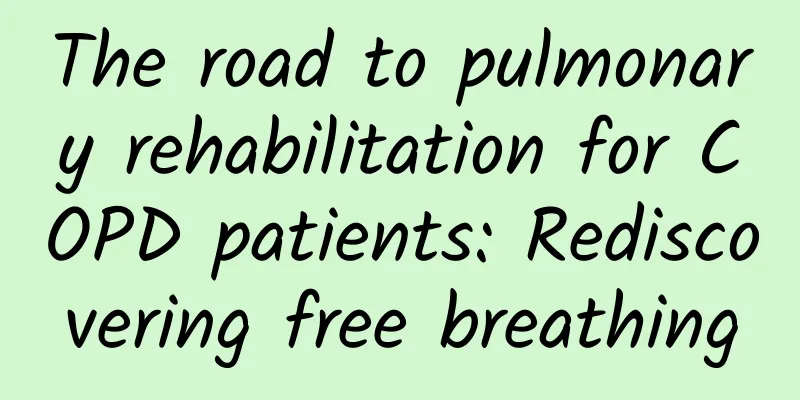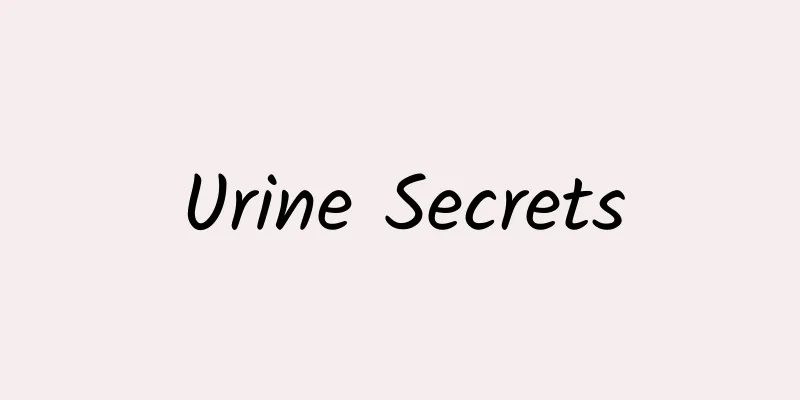The road to pulmonary rehabilitation for COPD patients: Rediscovering free breathing

|
Author: Qu Lei, deputy chief physician of Central Theater Command General Hospital Shu Qinghua, Chief Nurse, Central Theater Command General Hospital Li Xiang, attending physician at the Central Theater Command General Hospital Reviewer: Hu Zhenhong, Chief Physician, Central Theater Command General Hospital Yang Fang, Deputy Chief Nurse, Central Theater Command General Hospital Chronic obstructive pulmonary disease, abbreviated as "COPD", is a lung disease characterized by persistent airflow limitation and is progressive. The onset of COPD is closely related to long-term smoking, air pollution, occupational dust exposure and other factors. As the disease progresses, patients will gradually develop symptoms such as coughing, sputum, and difficulty breathing, and their activity tolerance will continue to decline, which will not only cause patients to lose their ability to work, but also make daily walking, dressing, and even eating difficult. However, COPD is a preventable and treatable lung disease. In the comprehensive treatment of COPD, pulmonary rehabilitation is a very important part. 1. What is pulmonary rehabilitation? Pulmonary rehabilitation is a comprehensive intervention therapy program based on comprehensive assessment and tailor-made for patients, including exercise training, respiratory muscle training, expectoration training, health education, psychological support, nutritional intervention, etc. Pulmonary rehabilitation aims to improve the respiratory function of COPD patients, enhance exercise capacity, alleviate dyspnea symptoms, improve quality of life, reduce the number of acute exacerbations and hospitalization rate, and is of great significance for the long-term management of COPD patients. 2. What does pulmonary rehabilitation specifically include? 1. Sports training Exercise training is one of the core contents of pulmonary rehabilitation. According to the patient's physical condition and exercise ability, develop a personalized exercise plan, including aerobic exercise and strength training. ① Aerobic exercise: such as walking, Ba Duan Jin, Tai Chi, breathing exercises, walking training, jogging, cycling or using fitness equipment (such as lower limb bicycle training, intelligent lower limb power bicycle training) can enhance the patient's cardiopulmonary function and endurance; ② Strength training: It helps to strengthen the muscle strength of the limbs and reduce the feeling of dyspnea during daily activities. For patients with more serious conditions, chest expansion and stretching exercises can be selected; for patients with relatively mild conditions, dumbbells can be used for simple arm flexion and extension exercises, or elastic bands can be used to enhance muscle strength, improve flexibility, improve body coordination, or squat to exercise leg muscles. When exercising, patients should follow the principle of gradual progress, scientifically formulate exercise plans, and avoid excessive fatigue. Copyright images are not authorized for reproduction 2. Respiratory muscle training The respiratory muscle function of COPD patients is often weak, and respiratory muscle training can effectively improve this condition. Common methods include blowing balloons, blowing candles, pursed lip breathing, abdominal breathing, and instrument training (such as using a three-ball breathing trainer). These training methods can enhance the strength and endurance of respiratory muscles, reduce gas trapping, expel more waste gas, and inhale fresh air. 1. Pursed lip breathing : Close your mouth, inhale through your nose, and exhale slowly with pursed lips. The exhalation time is about twice the inhalation time. This breathing method can increase airway pressure, prevent premature collapse of small airways, and promote gas exhalation. 2. Abdominal breathing : The patient's abdomen bulges when inhaling and sinks when exhaling. The movement of the diaphragm can improve breathing efficiency and reduce breathing power consumption. In each breathing cycle, take a deep breath for 3 to 5 seconds, hold your breath for 1 second, then exhale slowly for 3 to 5 seconds, and hold your breath for 1 second. Breathing should be deep, long and slow, with a ratio of inhalation to exhalation time of 1:2 or 1:3. Patients can perform respiratory muscle training several times a day in a quiet state, each time for a few minutes, and gradually develop good breathing habits to make breathing smoother and deeper. 3. Three-ball breathing trainer training The three-ball breathing trainer is a medical device used to improve respiratory function. It helps to enhance the strength and endurance of respiratory muscles by increasing respiratory resistance. Copyright images are not authorized for reproduction 3. Expectoration training 1. **.** Coughing training: Take a deep breath, hold your breath for a while, and then use your abdominal muscles to contract to cough up the phlegm. You can also first move the phlegm by exhaling and then cough it out. When you are weak, leaning forward 20 to 45 degrees will help you cough up the phlegm. 2. Postural drainage: By changing the body position, gravity is used to help sputum discharge. However, it should be noted that the sputum discharge time should not be too long. When the secretion is small, it should be done twice a day, and when the secretion is large, it should be done 3 to 4 times a day, 5 to 10 minutes for each part, and multiple parts drainage should not exceed 45 minutes. It is forbidden for the elderly, the weak, and patients with severe heart and vascular diseases. 3. Chest percussion vibration: Use your hands or a mechanical percussion device to tap the chest wall to create vibrations, which move sputum to the large airways for easy discharge. 4. Oscillating positive pressure exhalation The device generates oscillation and positive pressure during exhalation to help clear airway secretions and improve lung function. 5. Spontaneous drainage: By controlling the depth and speed of breathing, it helps patients gradually move sputum from the small airways of the lungs to the large airways, and eventually expel it through coughing. Copyright images are not authorized for reproduction 4. Health education Understanding COPD disease knowledge is crucial for patients' self-management. For example, knowing how to use inhaled drugs correctly; understanding precautions in daily life, such as avoiding contact with harmful gases and particles, preventing respiratory infections, and adding or removing clothes in time according to weather changes; how to reasonably use home oxygen therapy, such as breathing oxygen for more than 15 hours a day, and the oxygen flow rate is generally 1 to 2 L/min. Through health education lectures, brochures, one-on-one guidance from medical staff and other forms, patients can master more knowledge and skills of disease management, improve their self-care ability, and actively cooperate with treatment and rehabilitation. 5. Psychological support COPD patients often face psychological pressure and anxiety due to long-term suffering from the disease. These negative emotions will further aggravate the feeling of dyspnea, forming a vicious circle. Therefore, psychological support is indispensable in pulmonary rehabilitation. Patients can obtain emotional support and comfort through cooperation with family members and social organizations. At the same time, participating in relevant psychological counseling activities can also help alleviate the discomfort and mental stress caused by symptoms. 6. Nutritional intervention COPD patients often cough, expectorate and have difficulty breathing, which increases energy consumption and is often accompanied by problems such as loss of appetite. They are prone to malnutrition, which in turn affects respiratory muscle function and the body's immunity. Therefore, reasonable nutritional support is critical. Patients' diets should focus on balanced nutrition, increase protein intake, such as lean meat, fish, eggs, beans, etc., while ensuring adequate carbohydrate and fat supply, and eat more fresh vegetables and fruits to supplement vitamins and minerals. 3. How should pulmonary rehabilitation be implemented? Pulmonary rehabilitation usually requires the development of an individualized plan under the guidance of professional medical staff, and a period of intensive training in the respiratory department or rehabilitation department of the hospital so that patients can master various rehabilitation skills. However, pulmonary rehabilitation is a long process. After discharge, patients still need to persist in rehabilitation training at home, and go to the hospital for regular checkups to adjust the rehabilitation plan according to changes in their condition. IV. Summary Although the road to pulmonary rehabilitation for COPD patients is full of challenges, as long as they persevere in comprehensive rehabilitation treatment under the professional guidance of medical staff and the active cooperation of patients, they can effectively improve their respiratory function, improve their quality of life, delay the progression of the disease, and embrace a life of breathing freely again. Let us work together to open a new chapter of pulmonary rehabilitation for COPD patients with scientific methods and firm beliefs. |
>>: Rumor debunked: Eating alkaline foods can prevent cancer!
Recommend
Methods to promote follicle development
When a woman ovulates, her body will undergo some...
When is the best time to plant lotus and what should you pay attention to?
Lotus is very common in southern China. It is lov...
Did you stay up late during the busy Spring Festival? What are the effects of staying up late? And how to alleviate it?
A Spring Festival without a busy schedule is not ...
What are the ways for women to reduce body fat?
The body fat percentage of healthy women is gener...
Can patients with Hepatitis C breastfeed?
Hepatitis C not only poses a health hazard to peo...
What is the normal thickness of NT?
The Nt test is one of many prenatal check-up item...
Brown discharge during non-menstrual period
If brown discharge occurs outside of menstruation...
Can I eat American almonds during menstruation?
We also call American almonds almonds. American a...
Do you post your step count on WeChat Moments? People who rank high should take a look. There is a danger that is quietly approaching.
Author: Hou Jiayi Shanxi Provincial Hospital of T...
Is the popular theory that “umbilical cord blood is useless” or even “harmful” true?
Umbilical cord blood is the blood that remains in...
August "Science" Rumors List: Can intravenous infusion prevent stroke? Can using an air fryer cause cancer?
The August "Science" Rumor List is here...
What are the symptoms of physical weakness in girls?
Because of their special physiological structure,...
What is the reason for frequent fetal movements at 35 weeks of pregnancy?
In the late stages of pregnancy, women will exper...
What does it mean when a woman's upper left eyelid twitches?
In folklore, there are some oral sayings about th...
Does the Parasite CEO love his wife? Why did the driver ask the male owner if he loves his wife?
The Korean movie "Parasite" is popular ...









